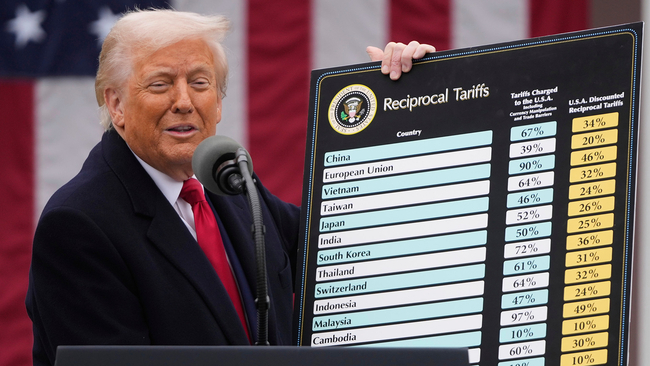Key Differences Between Kamala Harris’s Leadership and Donald Trump’s
As the 2024 presidential race heats up, the contrasting leadership styles of Kamala Harris and Donald Trump have come under intense scrutiny. Both leaders bring distinct approaches to the table, reflecting their unique personalities and political philosophies. This blog post explores the key differences between Harris’s and Trump’s leadership traits, highlighting why Harris’s style is often viewed more favorably in terms of positive leadership attributes.
Empathy and Compassion vs. Dominance and Divisiveness
Kamala Harris:
- Empathy and Compassion: Harris is widely recognized for her empathetic approach to leadership. She consistently advocates for marginalized communities and prioritizes social justice and equality. Her work on the Maternal CARE Act, which aims to reduce maternal mortality rates among women of color, exemplifies her compassionate leadership[3].
- Inclusive Leadership: Harris’s leadership style is collaborative and inclusive, emphasizing coalition-building and teamwork. She engages directly with communities to understand their needs and works to create policies that benefit all[3].
Donald Trump:
- Dominance and Divisiveness: Trump’s leadership style is characterized by a strong emphasis on personal loyalty and dominance. His approach often creates divisions rather than fostering unity. Trump’s rhetoric and policies have frequently polarized the nation, leading to an environment of fear and exclusion[2][3].
- Authoritarian Tendencies: Trump’s top-down leadership style is more authoritarian, focusing on asserting control and power rather than collaboration and inclusivity[3].
Authenticity and Integrity vs. Charisma and Self-Promotion
Kamala Harris:
- Authenticity and Integrity: Harris is known for her authenticity and integrity. She shares personal stories and connects with people on a human level, fostering trust and relatability. Her candid discussions about her heritage and the struggles of her immigrant parents highlight her genuine nature[3].
- Purpose-Driven Leadership: Harris’s leadership is driven by a clear sense of purpose and a desire to effect positive change. Her advocacy for social justice and equality is deeply rooted in her values, not personal ambition[3].
Donald Trump:
- Charisma and Self-Promotion: Trump is often seen as more charismatic and a stronger leader in terms of mobilizing support. However, his leadership is frequently driven by self-promotion and a desire for power. This focus on personal gain often overshadows broader policy goals and the needs of the American people[1][2].
- Lack of Transparency: Trump’s administration was marked by numerous controversies and allegations of misinformation, which eroded public trust. His leadership style often lacked the transparency and integrity that Harris embodies[1][2].
Commitment to Equity vs. Favoring the Powerful
Kamala Harris:
- Commitment to Equity: Harris’s leadership is deeply rooted in a commitment to equity and justice. She has consistently championed policies that promote fairness and equality, such as criminal justice reform and healthcare access[3].
- Advocacy for Marginalized Groups: Harris’s focus on addressing systemic inequalities and promoting health equity underscores her dedication to creating a more just society[3].
Donald Trump:
- Favoring the Powerful: Trump’s policies frequently favored the wealthy and powerful, often at the expense of vulnerable populations. His tax cuts, for example, disproportionately benefited the rich, while his administration’s stance on healthcare threatened to strip millions of Americans of their coverage[1][2].
- Policy Polarization: Trump’s approach to policy often polarized the nation, creating an environment where the interests of the powerful overshadowed those of the broader population[2].
Collaborative Approach vs. Authoritarian Leadership
Kamala Harris:
- Collaborative Leadership: Harris understands the importance of building coalitions and working across different groups to achieve common goals. Her inclusive leadership style emphasizes teamwork and collective action, fostering a more cohesive and supportive environment[3].
- Grassroots Engagement: Harris’s grassroots approach and ability to forge coalitions and collaborate across various groups are key aspects of her leadership style. She invites everyone to participate in the conversation, promoting unity and inclusivity[3].
Donald Trump:
- Authoritarian Leadership: Trump’s leadership style is more authoritarian and top-down, focusing on personal loyalty and control. This approach often alienates allies and creates divisions within the organization or community[3].
- Divisive Rhetoric: Trump’s confrontational style and emphasis on personal loyalty have created an environment of fear and compliance rather than collaboration and mutual respect[2][3].
Conclusion
Kamala Harris and Donald Trump represent two distinctly different leadership styles. Harris’s empathetic, authentic, and collaborative approach contrasts sharply with Trump’s dominant, divisive, and self-promotional style. Harris’s commitment to equity and justice, combined with her inclusive and purpose-driven leadership, positions her as a leader who can unite and uplift the nation. In contrast, Trump’s focus on personal loyalty and power often leads to polarization and division. As the 2024 presidential race unfolds, these differences in leadership traits will undoubtedly play a crucial role in shaping the future of American politics.
Citations:
[1] https://today.yougov.com/politics/articles/50144-harris-vs-trump-americans-evaluate-personality-and-policy
[2] https://core.ac.uk/download/pdf/327205735.pdf
[3] https://www.forbes.com/sites/edwardsegal/2024/07/23/insights-into-kamala-harris-leadership-style/
[4] https://edition.cnn.com/2024/07/24/politics/cnn-poll-kamala-harris-donald-trump/index.html
[5] https://economictimes.indiatimes.com/news/international/us/is-donald-trump-losing-to-kamala-harris-here-is-what-these-two-polling-surveys-say/articleshow/112022485.cms










